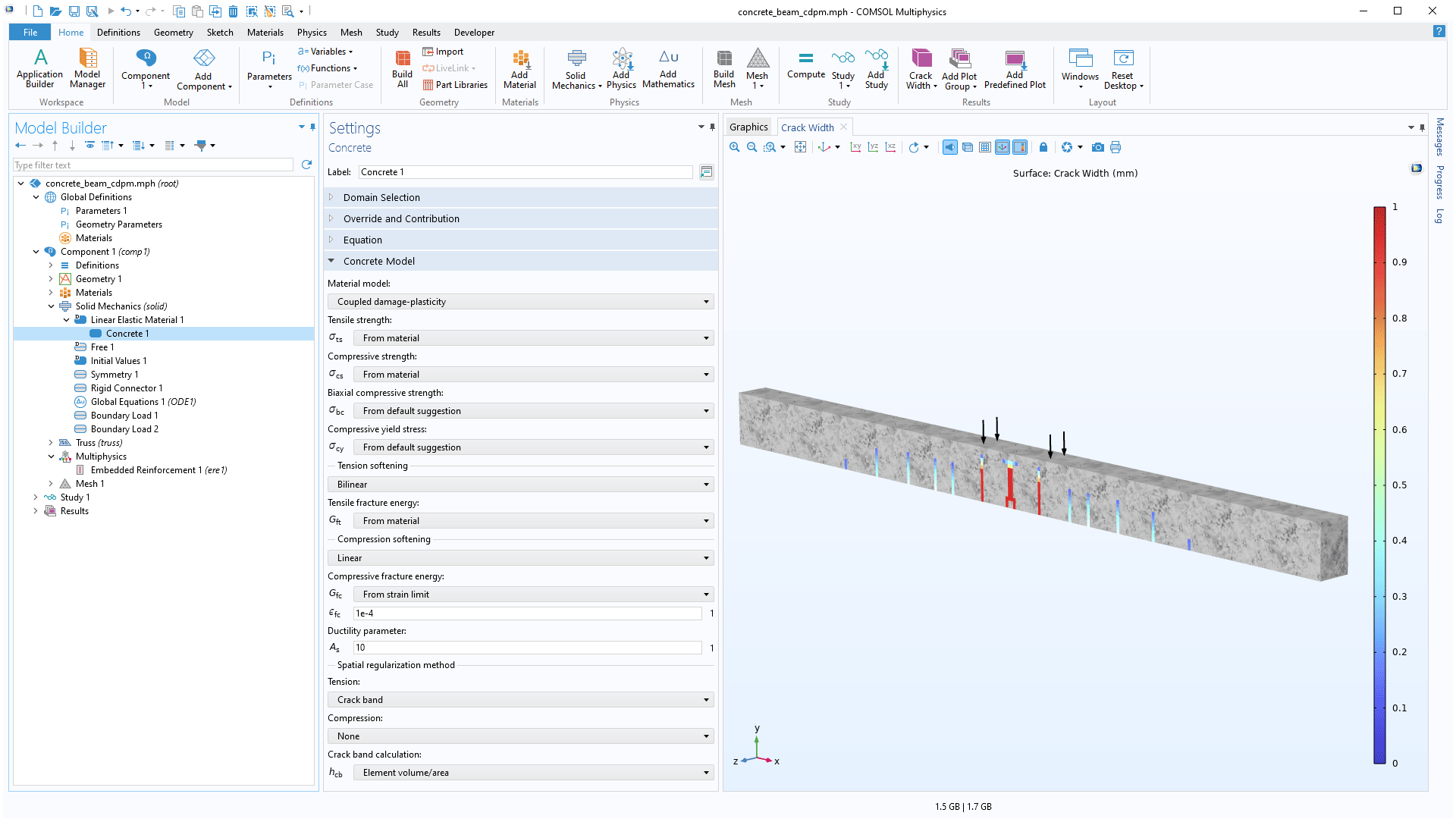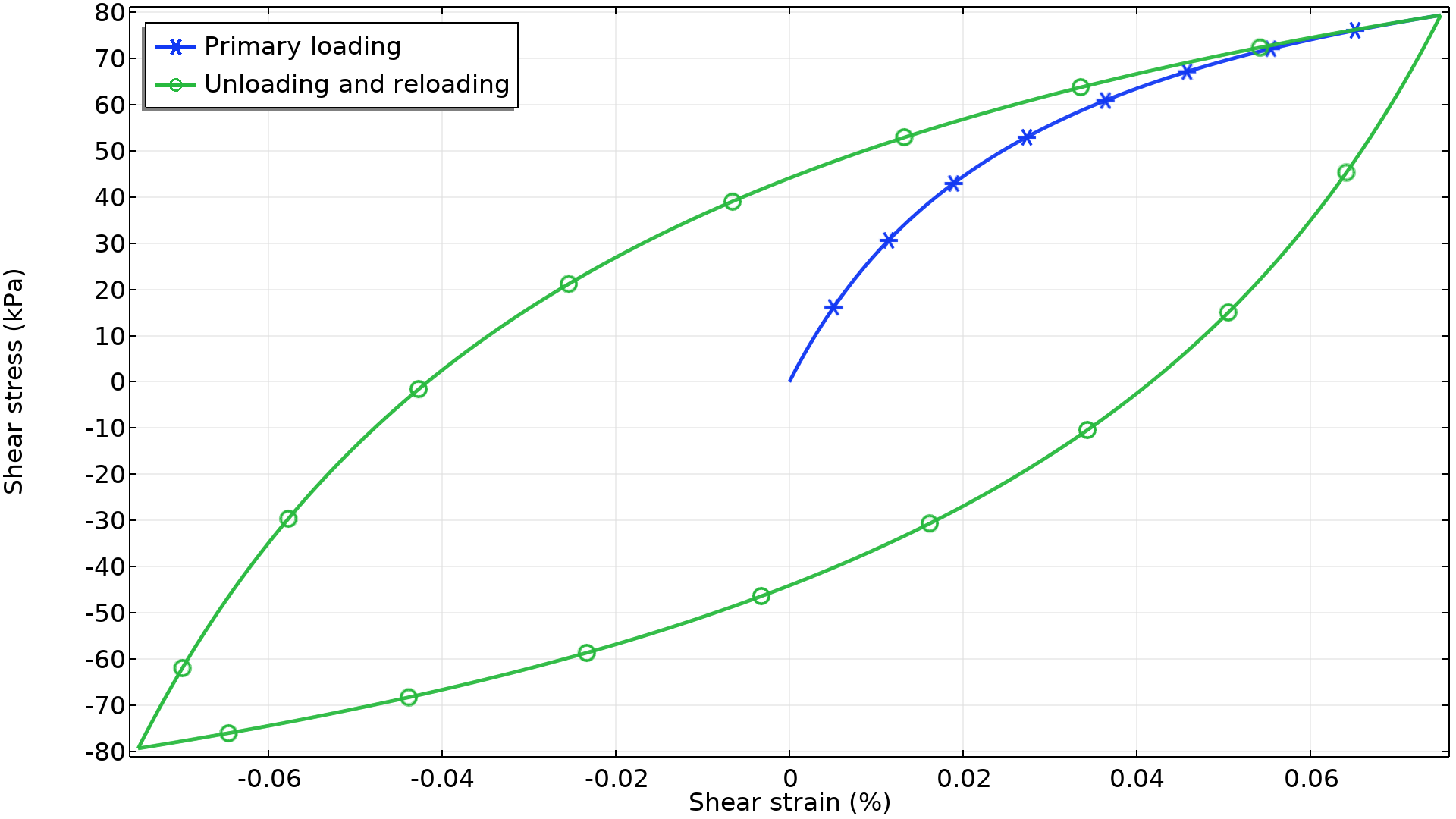support@comsol.com
Geomechanics Module Updates
For users of the Geomechanics Module, COMSOL Multiphysics® version 6.2 provides extended functionality for modeling concrete structures, new soil material models, and updates to the multiplicative flow rule for soil plasticity models that extend their applicability to the large-strain regime. Learn more about these updates below.Coupled Damage–Plasticity Model for Concrete
The new Coupled damage–plasticity material model combines damage mechanics with a plasticity model. The model can be used to describe important characteristics of the mechanical response and failure of concrete and similar brittle materials subjected to multiaxial and cyclic loading. The Failure of a Concrete Beam Using Coupled Damage–Plasticity and Concrete Damage–Plasticity Material Tests tutorial models showcase this new addition.
Improvements to Soil Models
Two new material models for soils have been added: Hardening Soil Small Strain and Small Strain Overlay. These models, as well as all of the previously existing material models in the Plasticity, Soil Plasticity, and Elastoplastic Soil Material families, have a new formulation based on the multiplicative decomposition of deformation gradients. This makes it possible to study problems where very large strains occur. These improvements can be seen in the Hysteresis in Soil Using the Small-Strain Overlay Model and Triaxial Test with the Hardening Soil Small-Strain Material Model tutorial models.
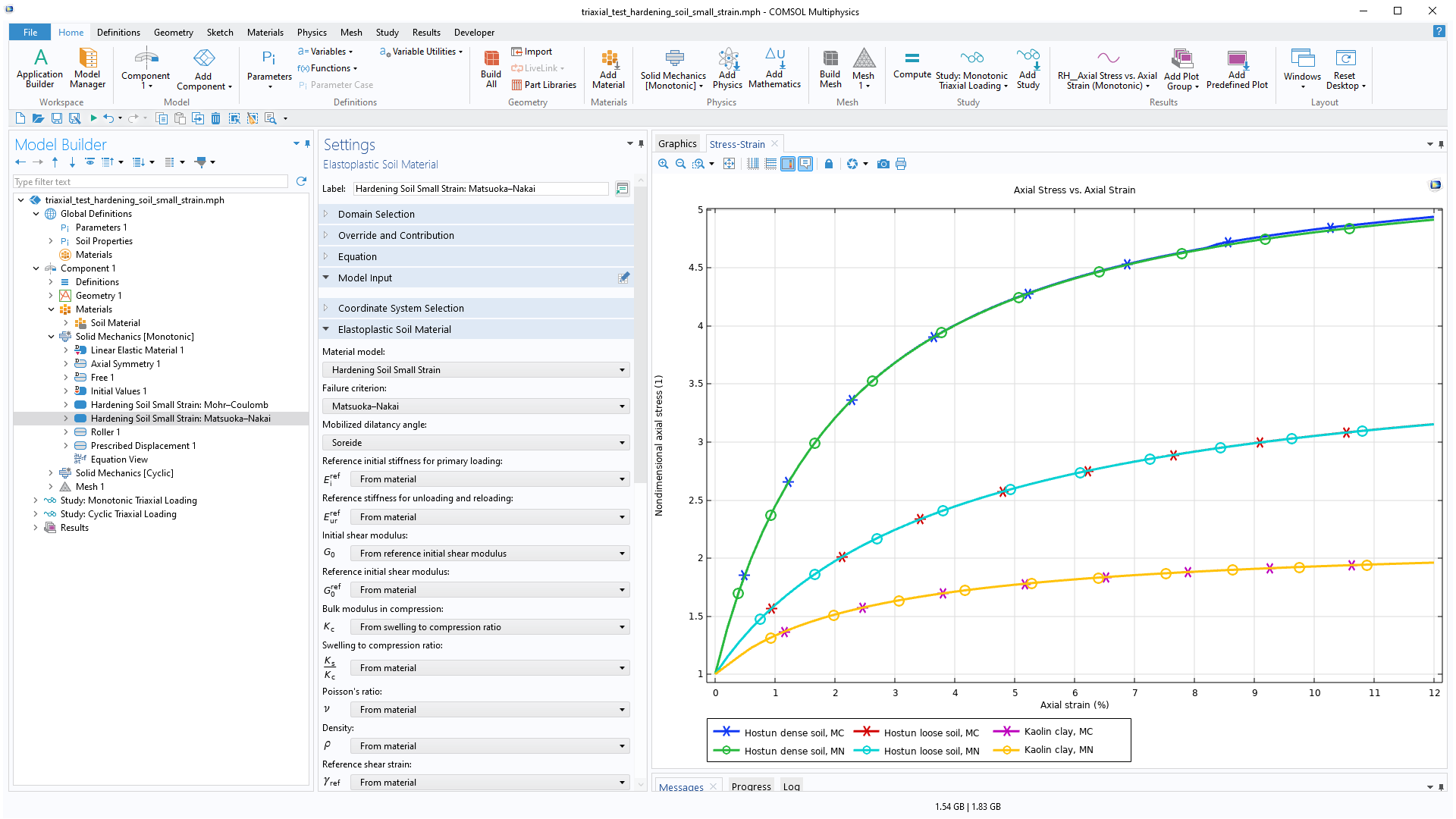
New Phase-Field Damage Multiphysics Interface
The new Phase-Field Damage multiphysics interface combines a Solid Mechanics interface with the new Phase Field in Solids interface through a Phase-Field Damage bidirectional multiphysics coupling. The stress or the strain energy density drives the evolution of the phase field, and the phase field determines the degree of damage to the elastic material model.
New Tutorial Models
COMSOL Multiphysics® version 6.2 brings the following new tutorial models to the Geomechanics Module.
Hysteresis in Soil Using the Small-Strain Overlay Model
Application Library Title:
hysteresis_small_strain_overlay
Download from the Application Gallery
Triaxial Test with the Hardening Soil Small-Strain Material Model
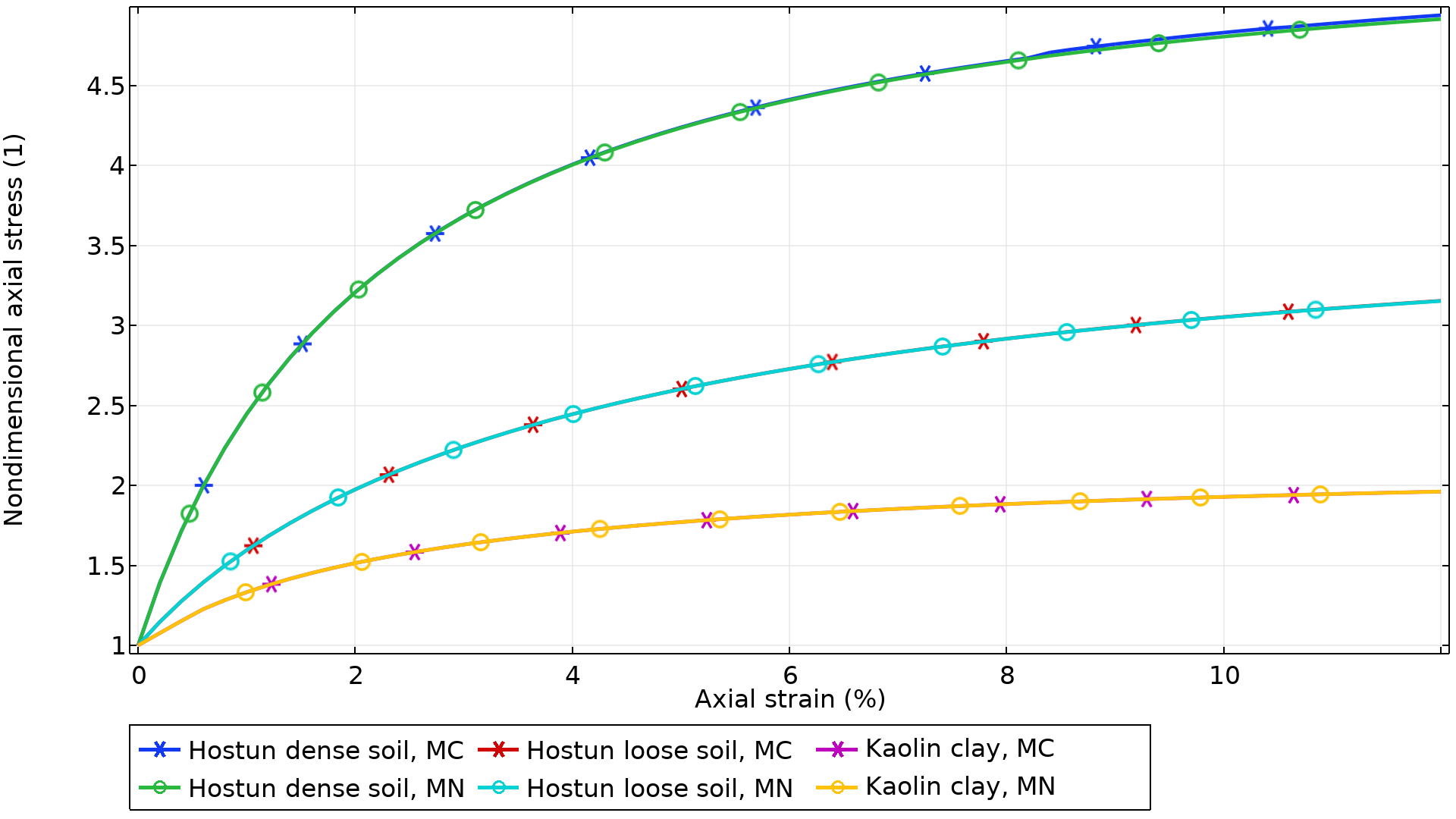
Application Library Title:
triaxial_test_hardening_soil_small_strain
Download from the Application Gallery
Concrete Damage–Plasticity Material Tests
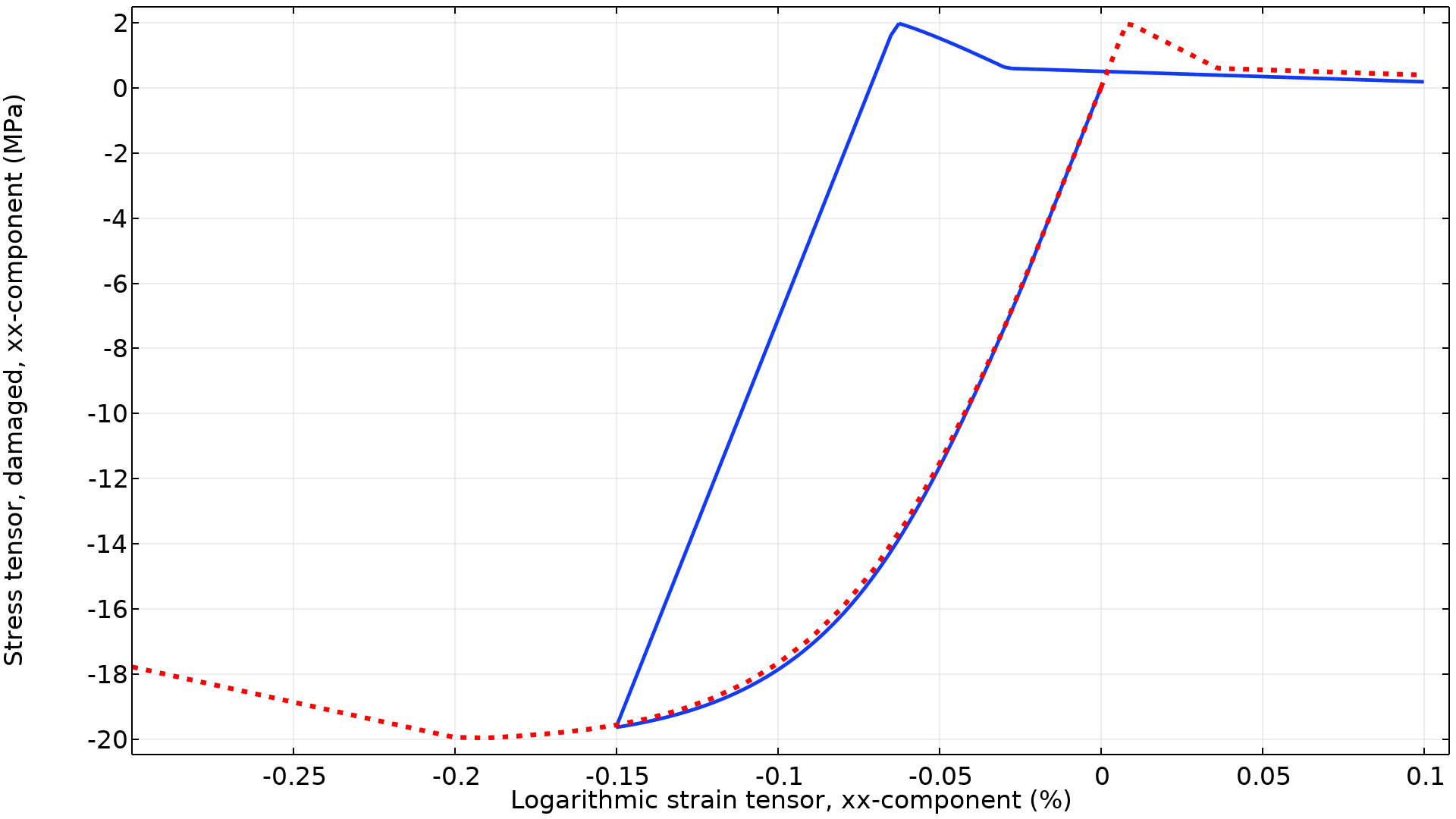
Application Library Title:
concrete_damage_plasticity
Download from the Application Gallery
Failure of a Concrete Beam Using Coupled Damage–Plasticity

Application Library Title:
concrete_beam_cdpm
Download from the Application Gallery

